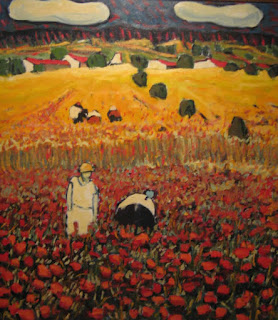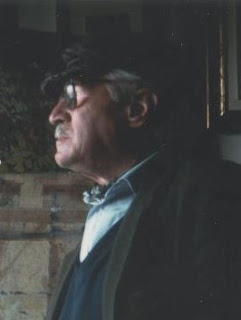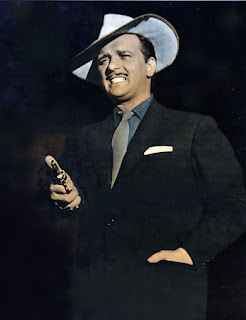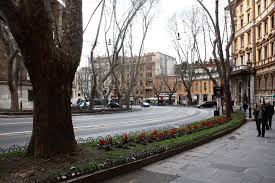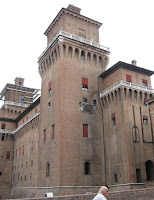Quake beneath Tyrrhenian Sea sparked killer wave
| Today Amalfi is a tranquil town with a peaceful harbour - a far cry from the devastation of 1343 |
The tremor itself caused deaths but not on the scale of the tsunami that followed, as a stretch of coastline from north of Naples to south of the Cilento National Park bore the brunt of a huge killer wave.
The towns of Bussanto and Blanda, near the present-day resorts of Sapri and Maratea, were among communities that disappeared completely, while Amalfi and Minori on what we know now as the Amalfi Coast were decimated.
Amalfi’s harbour and all the boats in it were destroyed, while the lower town fell into the sea. Where there had once been a thriving city, only a village remained, the population of which has never grown much beyond about 6,000 people. Its days as a significant maritime power were over.
 |
| The poet Petrarch was staying in Naples at the time of the deadly quake |
What is known today is in part down to the poet Francesco Petrarca - Petrarch - who was staying in Naples at the time of the catastrophe, at the convent of San Lorenzo, and recorded what he had witnessed.
His account, which was contained in a volume of letters entitled Epistolae familiares, described how Naples was in a state of fear on the day of the earthquake, having been warned by Bishop Guglielmo of Ischia that the city would be destroyed. It is thought likely that there had been a series of smaller tremors in the days leading up to the major quake.
Petrarch spoke of a “furious storm” with the only illumination provided by the frequent flashes of lightning, and recorded that “everything began to tremble” soon after he went to bed. He said that people “ran outdoors and tried to avoid things that fell to the ground.”
At first light, when Queen Giovanna was among those surveying the considerable damage to the port, the waters of the bay were seen to recede. Petrarch described the “hideous whiteness of the foam” as the sea suddenly started to retreat.
 |
| An artists' mock-up of how a tsunami off Campania might impact on coastal cities |
Among the first victims when the waves hit the Naples shoreline were a thousand soldiers deployed to help survivors of the original quake. Only one ship in the harbour was not destroyed, Petrarch noting that it had on board 400 convicts
The 1343 tsunami was not the first to be recorded on the Italian coast. After the eruption of Vesuvius in 79AD, Pliny the Younger described what experts have interpreted as a small tsunami.
Present day seismologists warn that the submerged volcano Marsili beneath the Tyrrhenian Sea about 175m (109 miles) south of Naples could pose a threat to millions of people living on the coast. Although it has not erupted in recorded history, volcanologists believe that Marsili is a relatively fragile-walled structure, made of low-density and unstable rocks, fed by an underlying shallow magma chamber.
Marsili belongs to the Aeolian Islands volcanic arc and is the largest active volcano of the chain, larger than Mount Etna. It was discovered during the 1920s and named after Italian geologist Luigi Ferdinando Marsili.
 |
| Amalfi's ninth-century cathedral was one building that survived the 1343 disaster |
Although Amalfi is much smaller than it once was, it is still a significant town on the Campania coastline between Sorrento and Salerno, attracting huge numbers of tourists each year. Its ninth-century Duomo dominates the town's central piazza, sitting at the top of a wide flight of steps. The cloister (Chiostro del Paradiso) and museum close by house sculptures, mosaics and other relics. Radiating away from the cathedral, narrow streets offer many souvenir shops and cafes for visitors. Amalfi is accessible by bus from Sorrento and Salerno and there are boat services that run along the coast.
 |
| A panorama of the coastal city of Salerno |
Travel tip:
Salerno, which has a population of about 133,000, is a city often overlooked by visitors to Campania, who tend to flock to Naples, Sorrento, the Amalfi coast and the Cilento, but it has its own attractions and is a good base for excursions both to the Amalfi coast and the Cilento, which can be found at the southern end of the Gulf of Salerno. Hotels are cheaper than at the more fashionable resorts, yet Salerno itself has an attractive waterfront and a quaint old town, at the heart of which is the Duomo, originally built in the 11th century, which houses in its crypt the tomb of one of the twelve apostles of Christ, Saint Matthew the Evangelist. The city can be reached directly by train from Naples, which is about 55km (34 miles) north.
More reading:
The Naples earthquake of 1626
How Italy's worst earthquake killed up to 200,000
The 79AD Vesuvius eruption
Also on this day:
1881: The birth of Pope John XXIII
1950: The birth of comedian and novelist Giorgio Faletti
1955: The birth of choreographer and dance show judge Bruno Tonioli
Home
